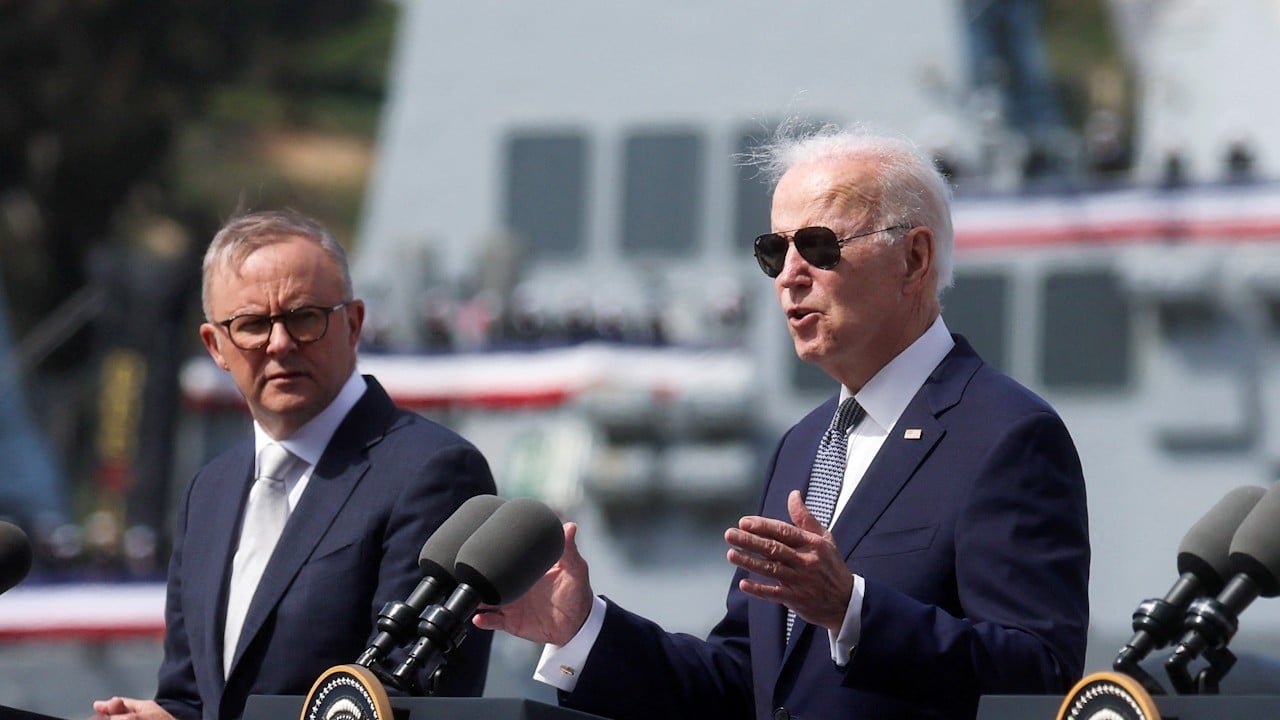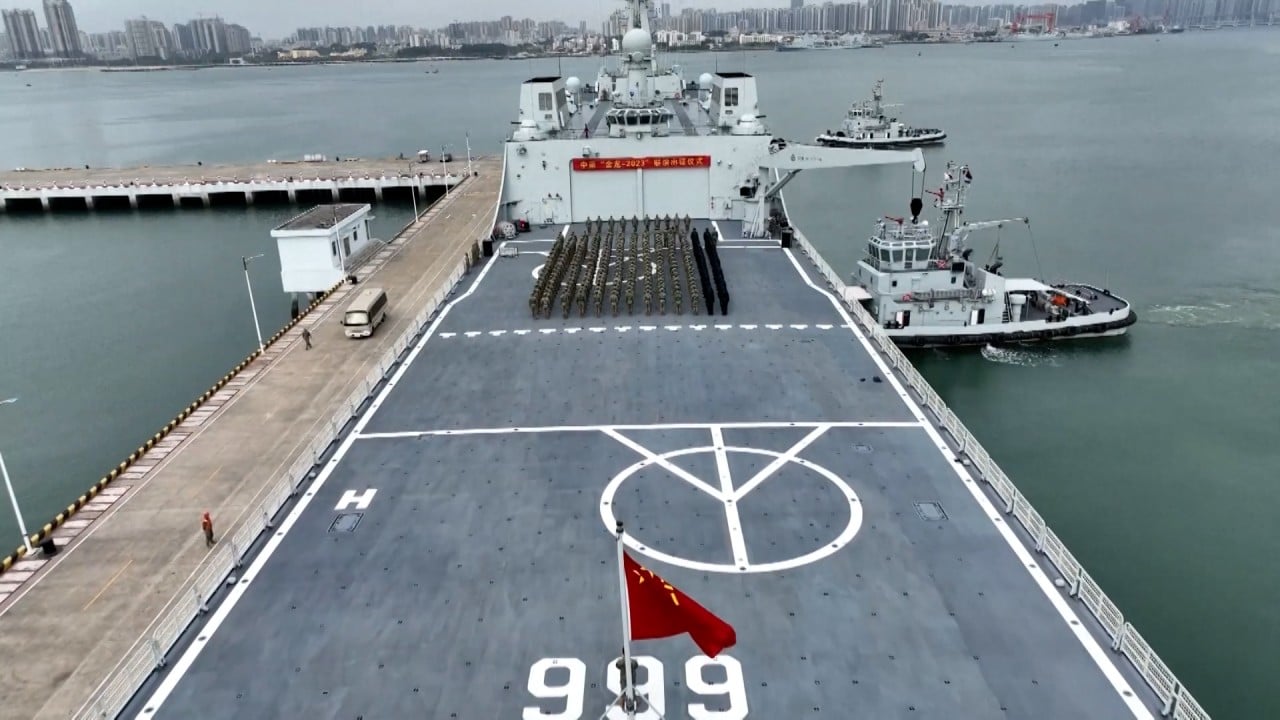
US steps up South China Sea visits to serve its political and diplomatic agenda, Chinese think tank says
- In annual report on US military presence, SCSPI predicts forces targeting the Taiwan Strait will increasingly become a variable affecting stability
- Report says US elevated profile of warship visits by turning on signals and intensifying media exposure to ‘maximise pressure’ on China
The South China Sea Strategic Situation Probing Initiative (SCSPI), a Beijing-based defence think tank, predicts forces targeting the Taiwan Strait will increasingly affect stability in the area.
The assessments were published in the initiative’s annual report monitoring US military presence in the South China Sea and other waters near China.
The report said US military operations were further politicised last year with greater media coverage of the movements and discussion of Chinese manoeuvres.
“The Pentagon and the US military have also repeatedly speculated on so-called dangerous interceptions or unprofessional behaviour by the [People’s Liberation Army] at sea to put pressure on the Chinese side from a diplomatic, public opinion and strategic perspective,” it said.
“On 28 August, the cruiser USS Antietam and the cruiser USS Chancellorsville crossed the Taiwan Strait from north to south. The US military signalled the media to make a high-profile and hype about this double cruiser formation crossing Taiwan.”
According to SCSPI statistics, there were about 1,000 sorties by large US reconnaissance aircraft into the South China Sea region – some as close as 13 nautical miles from the baseline of China’s mainland territorial waters – eight entries by US aircraft carrier strike groups and amphibious alert groups and at least 12 by nuclear-powered attack submarines.
The number of entries by the aircraft carrier strike groups dropped compared to the year before but they stayed in the area longer – rising from four to six days per visit in 2021 to more than 10 days per visit last year, according to SCSPI.
“The frequency and intensity of the US military activity in the South China Sea are increasing further, and the actions are becoming bolder and more aggressive, with a level of excitement that has long surpassed that of the Donald Trump administration,” it said.
According to the report, the US military in the South China Sea has significantly increased their reliance on Philippine military air and sea bases.
“US forward bases in the Philippines will play an even more important role in future military operations against the Taiwan Strait and the South China Sea,” it added.
These military actions in the region more closely aligned with Washington’s political agenda against China on multiple fronts, the report said.
South China Sea: risk of flashpoints ‘high’ as energy projects expand
The US conducted freedom of navigation operations four times in the South China Sea last year. Despite being a significant drop in number from 2021, most of those directly served the country’s political and diplomatic agenda, according to the report.
According to the Chinese report, the US elevated the profile of the warship visits across the strait by turning on their recognisable signals and intensifying media exposure, which SCSPI said aimed to “maximise political and strategic pressure” on China.
The number of large-scale military drills in the South China Sea that the US took part in grew to 102 last year, in addition to the thousands of small-scale exercises it conducted.
These military exercises sought to strengthen its military presence and intervene in the area and the Taiwan Strait, the report said.
“In 2023, it is foreseeable that, in addition to military operations directly targeting the South China Sea, US military operations against the Taiwan Strait will increasingly become a new variable affecting the stability of the situation in the South China Sea,” it added.
Philippine province near Taiwan may reluctantly allow US to use army bases
The report also said the US deployed at least four high-altitude balloons during this year’s drills between the US and the Philippines for reconnaissance in the South China Sea and the Philippine Sea in March and April.



